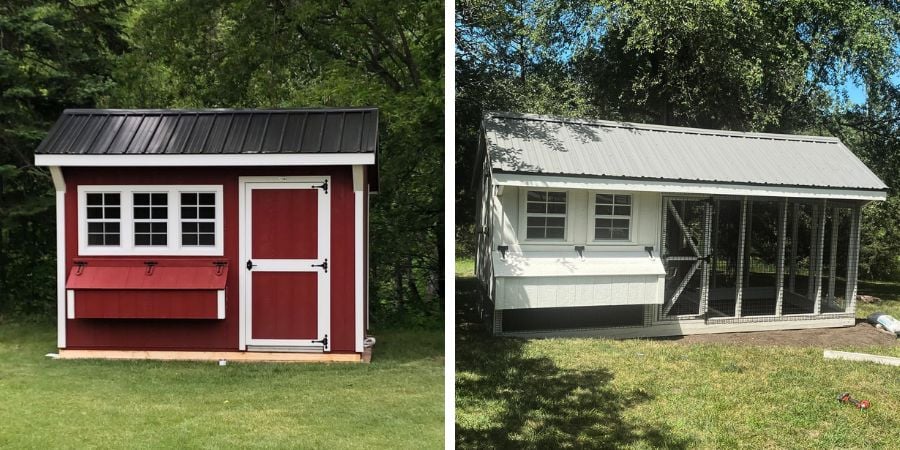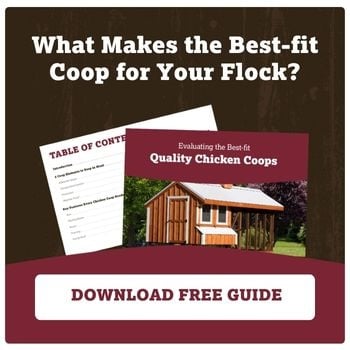Free Range vs. Chicken Run: Which is Best for Homesteading?
by Dakota Storage Buildings, on May 20, 2022
Deciding how to house your chickens has a direct influence on your flock’s health. The ongoing debate between allowing chickens to roam freely or keeping them within the confines of an enclosed run can be overwhelming for new chicken keepers. Each option comes with its own set of benefits and challenges, impacting everything from the birds' access to natural foraging opportunities to their protection from predators. By understanding the behavioral needs of chickens and the benefits of each housing method, you can make a decision that not only ensures the safety and health of your flock but also contributes to their overall well-being and productivity. Let’s unpack the different factors that can influence your choice so you feel empowered to create the optimal living conditions for your chickens on your homestead.
The Fundamentals of Free Range Chicken Coops
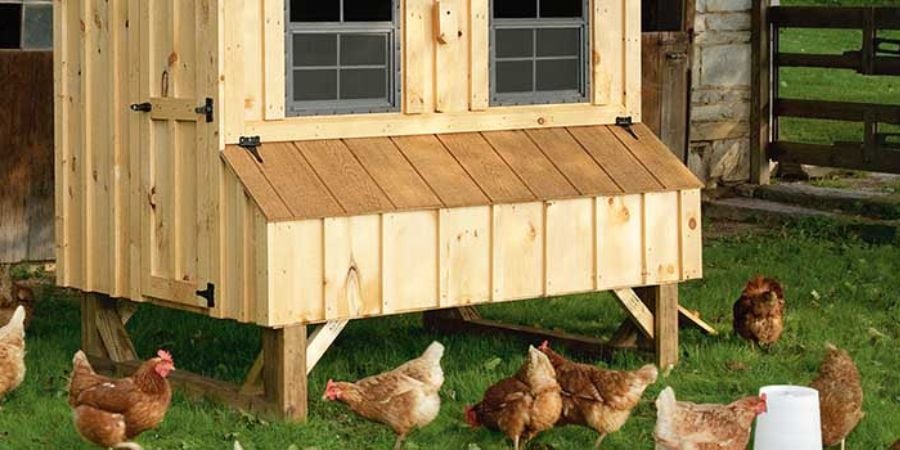
Free range, also known as pastured raised, means free from confinement. While there is no legal definition for "free range" in the United States, the USDA recognizes "free range" or "pasture-raised" as birds having "outdoor access" or "access to the outdoors," which is very loose in terms of what's expected.
For this reason, Humane Farm Animal Care (HFAC) has taken it upon itself to create standards for products that are labeled Certified Humane® and "Free Range." The HFAC's Certified Humane® "Free Range" standard requires a minimum space of 2 sq. ft. per bird, and they must be outdoors, weather permitting, for at least 6 hours per day. In addition, their Animal Care Standards for Laying Hens include standards for clean air (less than 10 ppm of ammonia), specifications regarding dust-bath areas and perches (must be provided at 6″ per bird and at least 20% must be elevated), feeder and drinker space, and more.
While these standards apply to commercial farmers who raise substantially more chickens than you will as a homesteader, they are worth noting. However, for the purpose of homestead chickens, free range simply means they're not fenced in at all, ever. Chickens are free to come and go from their coop without the restrictions of an encasement.
Advantages of Free Ranging:
- Chickens can reduce pests in your yard — from fleas and ticks to termites and mice.
- When chickens are not limited to the grass they're fed, they often ingest a wider variety of greens, including higher levels of omega-3.
- Some believe that free range chicken eggs are also higher in vitamin D, vitamin A, beta-carotene, and vitamin E.
- Free range chickens tend to exercise more as they have more space to explore.
Disadvantages of Free Ranging:
- A chicken coop for free range chickens are targets for predators like hawks, coyotes, foxes, and more.
- Free range chickens may not use the nesting boxes inside the coop, which means you will be going on egg hunts often.
- Chickens may wander off your property or into unsafe areas.
- Surrounding plants and natural items can be damaged as chickens roam and peck, potentially harming landscaped areas, gardens, or specific plants you wish to protect.
Exploring Enclosed Chicken Coop With an Attached Run
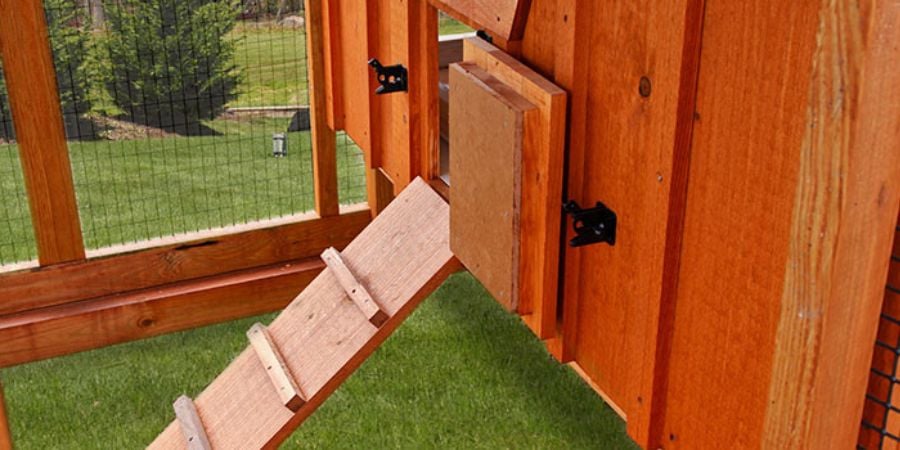
A chicken run is a defined area in which chickens are confined. The confinement area, or chicken run, can be a fence surrounding the coop or an encasement built into the coop structure. Our Enclosed Chicken Coop is a great example of a built-in run.
Chicken runs provide a protected, though limited space, for chickens. In this space, they can get fresh air, enjoy sunshine, forage, and more.
Advantages of Enclosed Runs:
- Chickens in an enclosed chicken run are easier to keep safe from predators, including foxes, raccoons, opossums, and hawks.
- Coop runs protect your flock from threatening elements. If winds pick up, hard-hitting hail falls, or heavy downpours happen, they won’t be far from the safety of their coop.
- Chickens in an enclosed chicken run lay their eggs in the coop nesting boxes instead of all over the yard like free range chickens do. This makes for easier egg collection and fewer broken eggs.
Disadvantages of Enclosed Runs:
- You will spend more time cleaning chicken poop. The smaller the chicken run, the more often you will need to clean it.
- The more concentrated chicken poop you have, the more flies will be attracted to the run.
- Overcrowding causes stress which can lead to sickness or bad behavior. If you choose to keep your chickens in a coop with an attached run, make sure you provide enough room for each one to move around.
Choosing the Best Location for Your Chicken Coop
Selecting the optimal location for your chicken coop is key to creating a pleasant and productive environment for both your chickens and your garden. When choosing a free range chicken coop, the ability to place the coop anywhere is an unparalleled advantage. This flexibility not only grants your chickens the freedom to explore but also allows them to naturally fertilize the soil, contributing significantly to the health of garden plants. The presence of chickens in garden areas, especially around trees and plants with high feed needs such as citrus trees and passionfruit vines, can dramatically improve their growth due to the continuous supply of natural fertilizer from the chickens' foraging activities. However, how much space do chickens need to be free-range? You will need to provide 2-4 square feet per standard-size chicken for them to live comfortably.
Homesteaders opting for an enclosed coop with a run must carefully consider its placement. It is crucial to choose a location that provides access to fresh grass, allowing chickens to engage in their instinctual behaviors like scratching and pecking in a controlled but enriching environment. This setup should mimic the natural conditions of a free range chicken coop as closely as possible. This ensures your chickens have a balance of space for exploration and safety. Strategicly positioning compost bins, either directly inside the run or directly adjacent, streamlines the process of converting chicken litter into nutrient-rich compost. This simplifies the management of chicken waste and contributes to a sustainable cycle for your garden’s productivity. By carefully considering the placement of your chicken habitat, you can ensure a thriving backyard that benefits both your flock and your garden, ultimately enhancing the overall productivity and sustainability of your homestead.
Enrichment Ideas for Your Coop
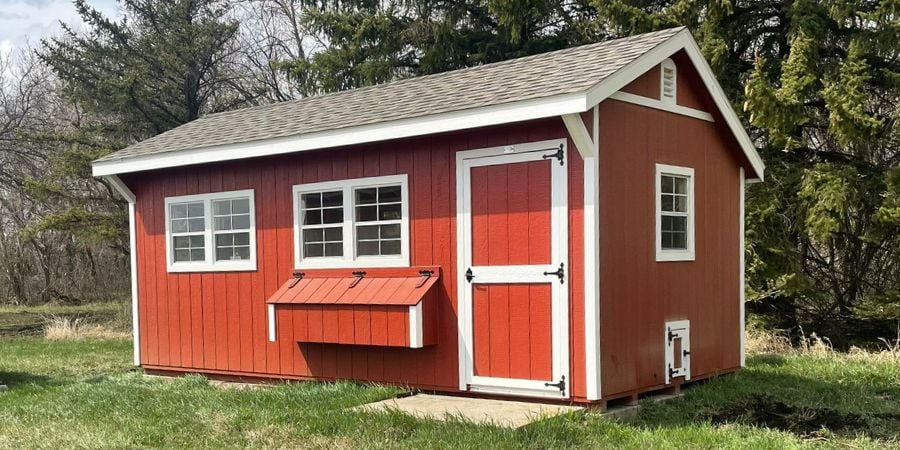
Ensuring your chickens have opportunities for enrichment is crucial for their well-being. Whether you opt for a free range chicken coop or an enclosed coop with a run, creating an environment that allows your flock to exhibit their natural behaviors, like scratching, foraging, and dust bathing, is extremely important. These activities are vital for their physical and mental health. In a well-designed chicken coop, providing ample space filled with soil, sand, or litter is essential. This encourages chickens to scratch and peck at the ground. This not only keeps them entertained but also helps in the natural trimming of their nails and beaks. Dust baths are another critical aspect of chicken enrichment and are vital for maintaining feather health and controlling parasites. A dedicated area for dust baths within the coop or run should be filled with fine dust or sand to help enhance their comfort and well-being.
Offering treats, like hanging vegetables or scatter-feeding grains, can add diversity to their routine, stimulating their minds and encouraging more active engagement with their environment. Introducing perches and different levels within the coop or run can also promote exercise and provide a sense of security, as chickens naturally seek higher ground for resting. Incorporating these enrichment strategies not only supports the natural behaviors of your chickens but also fosters a more dynamic and engaging environment for them. This approach to chicken care ensures a happier, healthier flock, which in turn, contributes to more productive egg-laying and backyard homestead.
Finding a Happy Medium
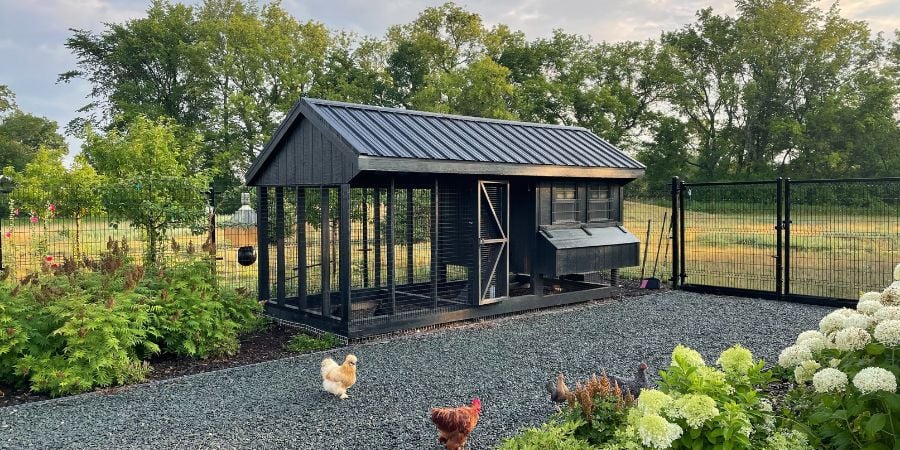
While free range may seem like the more attractive option of the two, keep in mind that even if you have an enclosed chicken run, you can let your chickens out whenever you want. If you are nearby or outside working all day, it might be an ideal time to let them explore. But when you're ready to go inside, putting them back in the enclosed chicken run will keep them safe when you can’t keep your eye on them. If you have a smaller property, live near potential predators, or tend to worry about the safety of chicken coop for free range chickens, it's a good idea to use a run — just be sure that they have enough space to stretch their legs and scratch around.
As you decide what you want to do for your homestead, keep in mind that both options — free range and enclosed coop — are good. One just might be a better fit for your space, goals, or preferences.
Selecting the Best Chicken Coop for Your Flock
At Dakota Storage Buildings, we understand the importance of selecting the right coop style for your homestead. We offer both free range chicken coops and enclosed coops to help ensure you find a solution that aligns with your homesteading goals. Our free guide is the perfect resource to help you navigate essential coop elements, necessary features, and the different types of chicken coop. This comprehensive resource can be beneficial in your decision-making process, equipping you with the knowledge to choose a coop that fosters a safe, enriching environment for your flock.
Choosing between free range and enclosed chicken coops is more than a matter of preference; it is about creating a habitat that supports the health and productivity of your chickens and homestead. By considering coop location, chicken enrichment, and exploring tailored Dakota Storage options, you can make an informed decision that ensures the well-being of your flock and the success of your homesteading endeavors. Download our free guide, “Evaluating the Best-fit Quality Chicken Coops” today and take the next step towards optimizing your chicken-keeping experience.





















